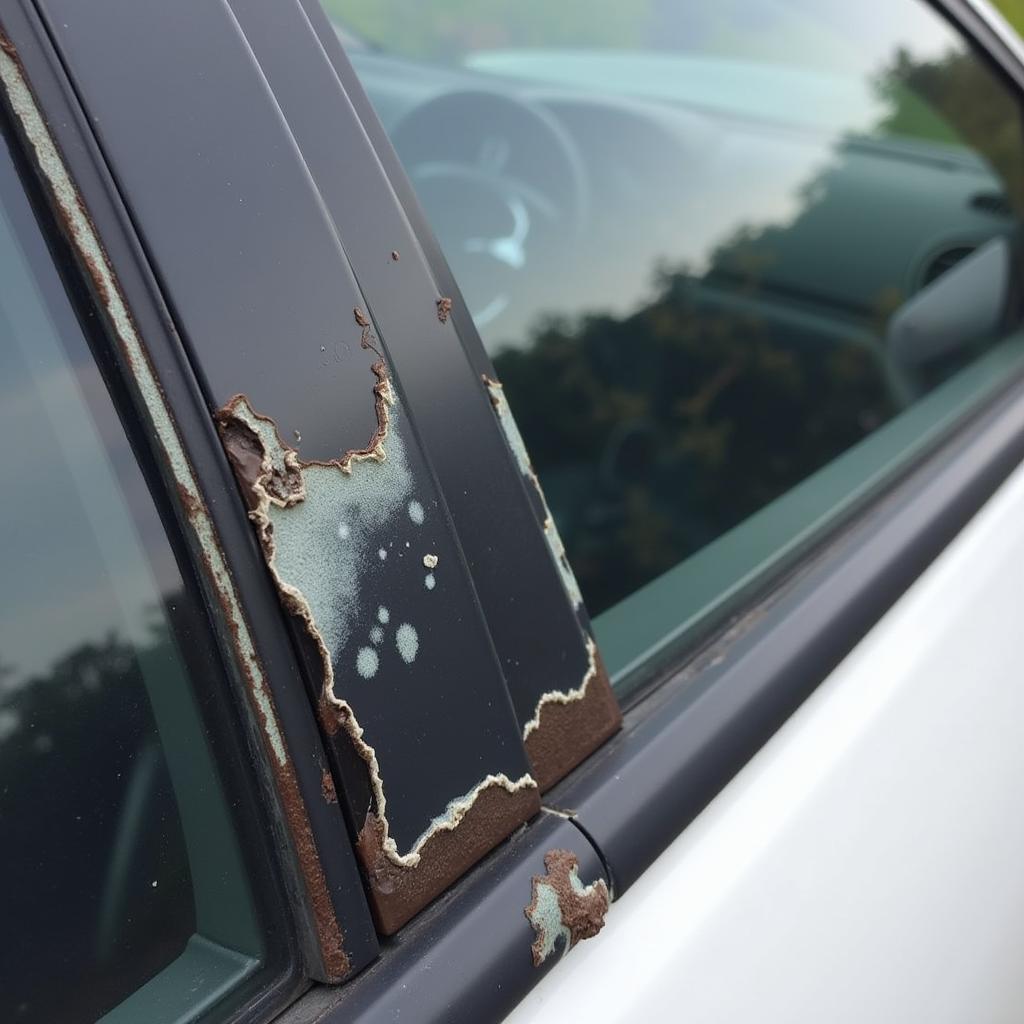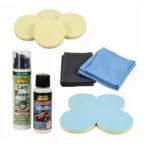Car window trim seals play a vital role in keeping your vehicle watertight and insulated. Over time, these seals can deteriorate due to exposure to the elements, leading to leaks, wind noise, and even damage to your car’s interior. Understanding how to identify, repair, or replace these seals can save you from costly repairs and maintain a comfortable driving experience.
What is Car Window Trim Seal and Why is it Important?
Car window trim seals are rubber strips that run along the edges of your car windows, creating a barrier between the glass and the car body. They serve several critical functions:
- Waterproofing: The primary function of a window seal is to prevent water from seeping into your car’s interior. A compromised seal can lead to leaks, damaging upholstery, electronics, and potentially leading to rust and mold growth.
- Wind Noise Reduction: Window trim seals act as a buffer, minimizing the amount of wind noise that enters your cabin. Damaged seals can result in annoying whistling or buffeting sounds, especially at higher speeds.
- Insulation: These seals contribute to your car’s overall insulation, helping to regulate cabin temperature and improve the efficiency of your heating and cooling system.
- Aesthetics: While primarily functional, window trim seals also play a role in your car’s appearance. A neat, intact seal contributes to a polished and well-maintained look.
Common Signs of a Damaged Car Window Trim Seal
Recognizing the signs of a failing window trim seal is crucial for addressing the issue early and preventing further damage. Here are some common indicators:
- Water Leaks: The most obvious sign is water entering your car, often noticeable after rain or a car wash. Check for damp carpets, wet upholstery, or water pooling in the footwells.
- Increased Wind Noise: A noticeable increase in wind noise, particularly a whistling or whooshing sound, especially at highway speeds, often points to a damaged seal.
- Visible Damage: Inspect the seals visually for cracks, tears, gaps, or any sections that appear brittle, discolored, or detached from the car body.
- Loose or Missing Trim: If you notice any loose or missing sections of the trim, it’s a clear indication that the seal needs attention.
Car Window Trim Seal Repair Options
 Damaged Car Window Trim Seal
Damaged Car Window Trim Seal
Depending on the severity of the damage, you have several options for repairing your car window trim seal:
- Sealant Application: For minor cracks or gaps, applying a high-quality automotive rubber sealant can effectively restore the seal’s integrity. Thoroughly clean the area, apply the sealant as instructed, and allow it to cure completely.
- Trim Adhesive: If the trim itself is loose or partially detached, you can use a strong automotive trim adhesive to reattach it securely. Ensure the surface is clean and dry for optimal adhesion.
- Seal Replacement: In cases of extensive damage, replacing the entire seal is often the most reliable solution. This typically involves removing the old seal, cleaning the surface, and installing a new seal using adhesive.
When to Consult a Professional
While some minor repairs can be handled by car owners, certain situations warrant the expertise of a professional auto glass technician:
- Extensive Damage: If the damage to the seal is significant or involves multiple seals, seeking professional help ensures a proper and lasting repair.
- Airbag Concerns: The windshield seal plays a role in airbag deployment. If you suspect damage to this particular seal, it’s crucial to have it inspected and repaired by a certified technician to ensure proper airbag function.
- Lack of Experience: If you’re uncomfortable with DIY repairs or lack the necessary tools and materials, it’s best to leave the job to a professional to avoid potential complications.
Car Window Trim Seal Repair Cost
The cost of car window trim seal repair can vary depending on several factors:
- Severity of Damage: Minor repairs using sealant or adhesive are generally inexpensive, while full seal replacements will cost more.
- Vehicle Make and Model: Seals for certain vehicles may be more expensive due to design complexity or availability.
- Labor Costs: If you opt for professional repair, labor costs will factor into the overall price.
It’s always advisable to get quotes from reputable auto glass repair shops to compare prices and services.
Preventing Car Window Trim Seal Damage
Proactive maintenance can extend the lifespan of your car window trim seals and prevent premature deterioration:
- Regular Cleaning: Regularly clean your car window seals using a mild soap solution and a soft-bristled brush to remove dirt, debris, and harmful contaminants.
- UV Protection: Park your car in shaded areas or use a car cover to shield the seals from prolonged exposure to harmful UV rays, which can cause the rubber to dry out and crack.
- Lubrication: Periodically apply a silicone-based lubricant to the seals to keep them pliable and prevent cracking.
- Careful Cleaning: Avoid using harsh chemicals, abrasive cleaners, or high-pressure washers on the seals, as these can damage the rubber.
Conclusion
Car window trim seals are essential components that contribute to your vehicle’s comfort, safety, and overall condition. By understanding the function of these seals, recognizing signs of damage, and taking proactive measures for repair and maintenance, you can avoid costly repairs and ensure a smooth and enjoyable driving experience for years to come.

